Hydrocarbons exploration rebounds
1 March 2023
MEED's upstream oil & gas report also includes: Energy security facilitates upstream spending

The world, and particularly countries in the Middle East and North Africa (Mena) region, remains undeterred in its quest to find more oil and gas resources, despite headwinds from energy transition activity and falling long-term hydrocarbons demand forecasts.
Last year, the global oil and gas exploration sector had its strongest year in more than a decade. In its effort to improve portfolios by adding lower-carbon, lower-cost advantaged hydrocarbons, the sector created at least $33bn of value and achieved full-cycle returns of 22 per cent, at $60-a-barrel Brent prices, according to a recent report from Wood Mackenzie.
Julie Wilson, director of global exploration research at Wood Mackenzie, says 2022 was “a standout year for exploration”.
“Volumes were good, but not stellar. However, explorers were able to drive very high value through strategic selection and by focusing on the best and largest prospects.
“The discoveries bring higher-quality hydrocarbons into companies’ portfolios, allowing them to reduce carbon by displacing less advantaged oil and gas supplies while also meeting the world’s energy needs.
“The highest value came from world-class discoveries in a new deepwater play in Namibia, as well as resource additions in Algeria and several new deepwater discoveries in Guyana and Brazil, where the latest wave of pre-salt exploration finally met with success,” she says.
“The average discovery last year was over 150 million barrels of oil equivalent, more than double the average of the previous decade,” she adds.
The exploration sector continues to be dominated by national oil companies (NOCs) and majors, with QatarEnergy, France-headquartered TotalEnergies and Brazil’s Petrobras leading the way in net new discovered resources in 2022, according to Wood Mackenzie. In total, NOCs and majors accounted for almost three-quarters of new resources discovered, the research consultancy said.
Qatar’s overseas footprint
In addition to raising gas production capacity from the North Field gas reserve and carrying out a liquefied natural gas (LNG) output expansion programme, QatarEnergy has been pursuing an overseas offshore oil and gas exploration and production (E&P) campaign in recent years.
The state enterprise has been investing in expanding its international upstream footprint, particularly in the gas space. In the past five years, QatarEnergy has acquired interests in gas-rich offshore blocks in Angola, Guyana, Kenya, Egypt, South Africa, Argentina, Mozambique, Morocco, Cyprus, Mexico, Brazil, Oman, Suriname and Canada.
In December, QatarEnergy won an offshore exploration block in Brazil in a consortium with TotalEnergies and Malaysia’s Petronas. QatarEnergy will hold a 20 per cent working interest in the Agua-Marinha production sharing contract, with TotalEnergies holding 30 per cent and Petronas Petroleo Brasil holding 20 per cent. Brazil’s state energy producer ANP will be the operator of the block, with a 30 per cent interest.
QatarEnergy also recently acquired a 30 per cent interest in exploration blocks four and nine off the coast of Lebanon. TotalEnergies is the operator of the blocks, holding a 35 per cent interest, with Italy’s Eni owning the remaining 35 per cent.
Oman E&P arena
Oman hosts the most foreign hydrocarbons E&P companies in the GCC. Majors such as BP, Shell and TotalEnergies have been present in the sultanate since the early 20th century, while smaller international upstream players have also been looking for – and producing – oil and gas for the past three decades.
The majority state-owned Petroleum Development Oman (PDO) operates the sultanate’s biggest and most prolific hydrocarbons concession, block six. The smaller oil and gas concession areas are operated by firms headquartered overseas such as Eni, Occidental Petroleum, Tethys Oil and Maha Energy, as well as by local firms such as ARA Petroleum, Majan Energy & Petroleum and Musandam Oil & Gas Company.
Oman’s Energy & Minerals Ministry signed a concession agreement in December 2021 with a consortium led by Shell’s Oman subsidiary, Shell Integrated Gas Oman, to develop and produce natural gas from block 10 of the Saih Rawl gas field.
The consortium comprises Omani state energy enterprise OQ and Marsa LNG, a joint venture of France’s TotalEnergies and OQ. The concession agreement established Shell as the operator of block 10.
By late January, Shell had started producing gas from the Mabrouk North East field located in block 10.
In September last year, the Omani energy ministry signed another E&P agreement with Shell and France’s TotalEnergies to develop block 11, which is located adjacent to block 10 and is understood to be rich in natural gas reserves.
Shell and TotalEnergies will own 67.5 per cent and 22.5 per cent stakes in block 11, respectively, with OQ holding the other 10 per cent. Shell is the operator with the majority stake in the concession.
UAE makes strides
Abu Dhabi National Oil Company (Adnoc) has completed two upstream concession licensing rounds in the past
four years, attracting oil and gas producing companies from the US, Italy, Pakistan, India, Thailand and Japan to explore for resources.
Offshore block two, which is operated by Italian energy major Eni with Thailand’s state-owned PTT Exploration & Production Public Company (PTTEP), has so far yielded two discoveries with combined estimated reserves of up to 3 trillion cubic feet (tcf) of gas.
In addition, in May last year, Adnoc announced the discovery of 650 million barrels of onshore crude oil reserves in Abu Dhabi, which increased the UAE’s hydrocarbons reserves base to 111 billion stock tank barrels of oil and 289 tcf of gas.
Adnoc also awarded Malaysia’s Petronas a six-year concession agreement in December to explore and appraise oil in unconventional onshore block one, deemed to be the Middle East’s first unconventional oil concession.
In Sharjah, Eni won stakes in all three upstream concession areas offered by Sharjah National Oil Company (SNOC) to international investors in the emirate’s first competitive hydrocarbons block bidding round, launched in June 2018.
In January 2019, Eni successfully secured 75 per cent, 50 per cent and 75 per cent stakes in SNOC’s concession areas A, B and C, respectively.
Then, in October last year, PTTEP acquired a 25 per cent stake from Eni in area A, as a result of which Eni’s share in all three concession zones is now at 50 per cent.
Sharjah’s oil and gas fortunes reversed in January 2021, when SNOC, together with its partner Eni, announced the start-up of the Mahani 1 gas well. This marked the commencement of gas production from the Mahani field, located in area B, the first such onshore hydrocarbons discovery made in Sharjah in 37 years.
 Energy security facilitates upstream spending
Energy security facilitates upstream spending
Bahrain labours on
Bahrain announced the discovery of the large Khalij al-Bahrain offshore hydrocarbons basin – estimated to contain 80 billion barrels of oil and 10-20 trillion cubic feet of gas – in April 2018.
Nearly five years later, Manama has been unable to make significant progress on the commercial appraisal of the oil and gas resources base. However, the lack of success with Khalij al-Bahrain has not deterred the country from continuing its exploration elsewhere.
In November, state energy conglomerate Nogaholding announced the discovery of natural gas in the two reservoirs of Al-Jawf and Al-Juba. The gas deposits are unconventional and situated in the Khuff and Unayzah geological formations.
Mena players make progress
Iraq, Opec’s second-largest oil producer, continues to seek more hydrocarbons resources in its territory. As recently as in February, the Oil Ministry awarded six oil concessions as part of the country’s fifth licensing round.
Three E&P concessions – one in Basra and two in Diyala governorates – were awarded to UAE-based Crescent Petroleum. Three others, also in Basra and Diyala, were awarded to China’s Geo-Jade Petroleum.
Eni’s discovery of the large Zohr gas field in the Mediterranean waters in 2015 elevated Egypt’s status as a significant upstream market globally, and the country’s government intends to continue to attract more E&P players on the back of this success.
Egypt’s hydrocarbons reserves spiked in 2022 with 53 new oil and gas discoveries: 42 oil wells and 11 gas wells, according to the Petroleum & Mineral Resources Ministry. The discoveries were made in Egypt’s Western Desert region, the Suez Gulf, the Mediterranean Sea and the Nile Delta.
So far in 2023, US-based Chevron, which operates the Nargis offshore concession in the East Mediterranean, together with its partners Eni and Egypt’s Tharwa Petroleum, has announced a discovery of Miocene and Oligocene gas-bearing sandstones.
At the start of this year, Egypt also launched an international licensing round for exploration rights in the Nile Delta and the Mediterranean, comprising 12 onshore and offshore blocks.
“There is a lot of uncertainty in future long-term demand scenarios for oil,” says Wilson.
“Explorers are accelerating oil exploration to meet near- and mid-term demand, while gas exploration was focused in geographies that can supply the gas-hungry European market. In some cases, major leases are approaching the expiration of the exploration term and companies are pushing to optimise their value.”
She concludes: “By 2030, fast-tracked development of these new discoveries could deliver 1 million barrels a day in oil and half a million barrels a day of equivalent gas production, generating $15bn in free cash flow.”
Exclusive from Meed
-
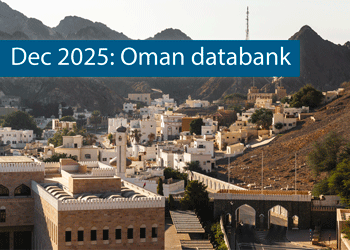 Oman’s growth forecast points upwards
Oman’s growth forecast points upwards24 December 2025
-
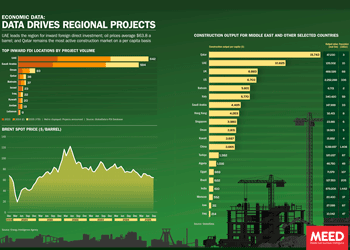 December 2025: Data drives regional projects
December 2025: Data drives regional projects23 December 2025
-
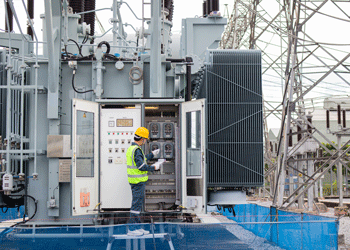 Local firm bids lowest for Kuwait substation deal
Local firm bids lowest for Kuwait substation deal22 December 2025
-
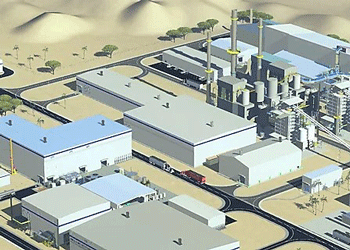 Saudi-Dutch JV awards ‘supercentre’ metals reclamation project
Saudi-Dutch JV awards ‘supercentre’ metals reclamation project22 December 2025
-
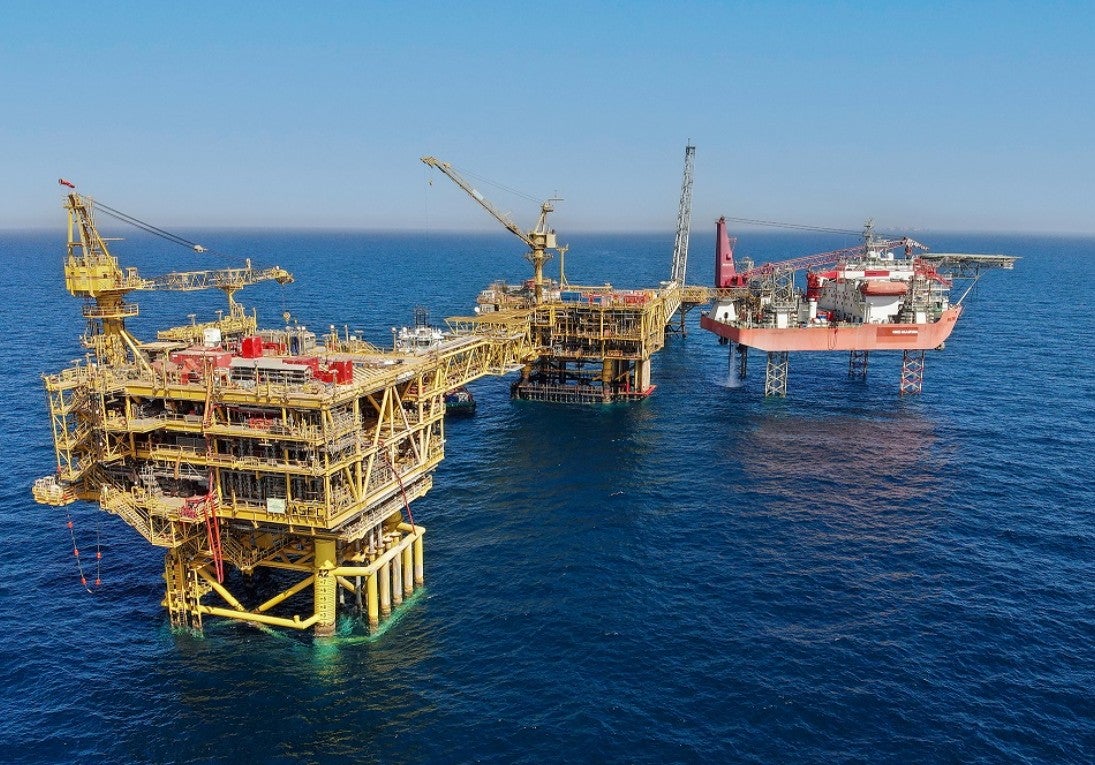 QatarEnergy LNG awards $4bn gas project package
QatarEnergy LNG awards $4bn gas project package22 December 2025
All of this is only 1% of what MEED.com has to offer
Subscribe now and unlock all the 153,671 articles on MEED.com
- All the latest news, data, and market intelligence across MENA at your fingerprints
- First-hand updates and inside information on projects, clients and competitors that matter to you
- 20 years' archive of information, data, and news for you to access at your convenience
- Strategize to succeed and minimise risks with timely analysis of current and future market trends

Related Articles
-
 Oman’s growth forecast points upwards
Oman’s growth forecast points upwards24 December 2025

MEED’s January 2026 report on Oman includes:
> COMMENT: Oman steadies growth with strategic restraint
> GVT & ECONOMY: Oman pursues diversification amid regional concerns
> BANKING: Oman banks feel impact of stronger economy
> OIL & GAS: LNG goals galvanise Oman’s oil and gas sector
> POWER & WATER: Oman prepares for a wave of IPP awards
> CONSTRUCTION: Momentum builds in construction sectorTo see previous issues of MEED Business Review, please click herehttps://image.digitalinsightresearch.in/uploads/NewsArticle/15306449/main.gif -
 December 2025: Data drives regional projects
December 2025: Data drives regional projects23 December 2025
Click here to download the PDF
Includes: Top inward FDI locations by project volume | Brent spot price | Construction output
MEED’s January 2026 report on Oman includes:
> COMMENT: Oman steadies growth with strategic restraint
> ECONOMY: Oman pursues diversification amid regional concerns
> BANKING: Oman banks feel impact of stronger economy
> OIL & GAS: LNG goals galvanise Oman’s oil and gas sector
> POWER & WATER: Oman prepares for a wave of IPP awards
> CONSTRUCTION: Momentum builds in construction sectorTo see previous issues of MEED Business Review, please click herehttps://image.digitalinsightresearch.in/uploads/NewsArticle/15306140/main.gif -
 Local firm bids lowest for Kuwait substation deal
Local firm bids lowest for Kuwait substation deal22 December 2025
The local Al-Ahleia Switchgear Company has submitted the lowest price of KD33.9m ($110.3m) for a contract to build a 400/132/11 kV substation at the South Surra township for Kuwait’s Public Authority for Housing Welfare (PAHW).
The bid was marginally lower than the two other offers of KD35.1m and KD35.5m submitted respectively by Saudi Arabia’s National Contracting Company (NCC) and India’s Larsen & Toubro.
PAHW is expected to take about three months to evaluate the prices before selecting the successful contractor.
The project is one of several transmission and distribution projects either out to bid or recently awarded by Kuwait’s main affordable housing client.
This year alone, it has awarded two contracts worth more than $100m for cable works at its 1Z, 2Z, 3Z and 4Z 400kV substations at Al-Istiqlal City, and two deals totalling just under $280m for the construction of seven 132/11kV substations in the same township.
Most recently, it has tendered two contracts to build seven 132/11kV main substations at its affordable housing project, west of Kuwait City. The bid deadline for the two deals covering the MS-01 through to MS-08 substations is 8 January.
https://image.digitalinsightresearch.in/uploads/NewsArticle/15305745/main.gif -
 Saudi-Dutch JV awards ‘supercentre’ metals reclamation project
Saudi-Dutch JV awards ‘supercentre’ metals reclamation project22 December 2025
The local Advanced Circular Materials Company (ACMC), a joint venture of the Netherlands-based Shell & AMG Recycling BV (SARBV) and local firm United Company for Industry (UCI), has awarded the engineering, procurement and construction (EPC) contract for the first phase of its $500m-plus metals reclamation complex in Jubail.
The contract, estimated to be worth in excess of $200m, was won by China TianChen Engineering Corporation (TCC), a subsidiary of China National Chemical Engineering Company (CNCEC), following the issue of the tender in July 2024.
Under the terms of the deal, TCC will process gasification ash generated at Saudi Aramco’s Jizan refining complex on the Red Sea coast to produce battery-grade vanadium oxide and vanadium electrolyte for vanadium redox flow batteries. AMG will provide the licensed technology required for the production process.
The works are the first of four planned phases at the catalyst and gasification ash recycling ‘Supercentre’, which is located at the PlasChem Park in Jubail Industrial City 2 alongside the Sadara integrated refining and petrochemical complex.
Phase 2 will expand the facility to process spent catalysts from heavy oil upgrading facilities to produce ferrovanadium for the steel industry and/or additional battery-grade vanadium oxide.
Phase 3 involves installing a manufacturing facility for residue-upgrading catalysts.
In the fourth phase, a vanadium electrolyte production plant will be developed.
The developers expect a total reduction of 3.6 million metric tonnes of carbon dioxide emissions a year when the four phases of the project are commissioned.
SARBV first announced its intention to build a metal reclamation and catalyst manufacturing facility in Saudi Arabia in November 2019. The kingdom’s Ministry of Investment, then known as the Saudi Arabian General Investment Authority (Sagia), supported the project.
In July 2022, SARBV and UCI signed the agreement to formalise their joint venture and build the proposed facility.
The project has received support from Saudi Aramco’s Namaat industrial investment programme. Aramco, at the time, also signed an agreement with the joint venture to offtake vanadium-bearing gasification ash from its Jizan refining complex.
Photo credit: SARBV
https://image.digitalinsightresearch.in/uploads/NewsArticle/15305326/main.gif -
 QatarEnergy LNG awards $4bn gas project package
QatarEnergy LNG awards $4bn gas project package22 December 2025
QatarEnergy LNG, a subsidiary of state-owned QatarEnergy, has awarded the main engineering, procurement, construction and installation (EPCI) contract for a major package for the second phase of its North Field Production Sustainability (NFPS) project.A consortium comprising the Italian contractor Saipem and state-owned China Offshore Oil Engineering Company (COOEC) has secured the EPCI contract for the COMP5 package. The contract value is $4bn, with Saipem declaring its share to be worth $3.1bn.
Milan-headquartered Saipem said the contract will run for about five years. The scope of work comprises engineering, procurement, fabrication and installation of two compression complexes, each including a compression platform, a living quarters platform, a flare platform supporting the gas combustion system, and the related interconnecting bridges. Each complex will have a total weight of about 68,000 tonnes.
Offshore installation operations will be carried out by Saipem’s De He construction vessel in 2029 and 2030.
MEED previously reported that the following contractors submitted bids for the NFPS phase two COMP5 package:
- Larsen & Toubro Energy Hydrocarbon (India)
- McDermott (US)
- Saipem/China Offshore Oil Engineering Company (Italy/China)
QatarEnergy LNG, formerly Qatargas, is said to have issued the tender for the NFPS phase two COMP5 package in the first quarter of the year.
Contractors submitted technical bids for the COMP5 package in late June, while commercial bids were submitted by 8 October, as per sources.
Based upon initial evaluation of bids by QatarEnergy LNG, L&TEH has emerged as the lowest bidder for the COMP5 package, followed by McDermott, with the consortium of Saipem and COOEC in third place, MEED reported in late October.
In the weeks following that, the project operator is said to have engaged all bidders for a final round of negotiations, during which the consortium of Saipem and COOEC is believed to have “clinched the deal”, according to sources.
The detailed scope of work on the COMP5 package covers the EPCI work on the following:
- Two gas compression platforms, each weighing 30,000-35,000 tonnes, plus jacket
- Two living quarters platforms, plus jacket
- Two gas flare platforms, plus jacket
- Brownfield modification work at two complexes
NFPS scheme
QatarEnergy’s North Field liquefied natural gas (LNG) expansion programme requires the state enterprise to pump large volumes of gas from the North Field offshore reserve to feed the three phases of the estimated $40bn-plus programme.
QatarEnergy has already invested billions of dollars in engineering, procurement and construction works on the two phases of the NFPS project, which aims to maintain steady gas feedstock for the North Field LNG expansion phases.
The second NFPS phase will mainly involve building gas compression facilities to sustain and gradually increase gas production from Qatar’s offshore North Field gas reserve over the long term.
Saipem has been the most successful contractor on the second NFPS phase, securing work worth a total of $8.5bn.
QatarEnergy LNG awarded Saipem a $4.5bn order in October 2022 to build and install gas compression facilities. The main scope of work on the package, which is known as EPCI 2, covers two large gas compression complexes that will comprise decks, jackets, topsides, interconnecting bridges, flare platforms, living quarters and interface modules.
The gas compression complexes – CP65 and CP75 – will weigh 62,000 tonnes and 63,000 tonnes, respectively, and will be the largest fixed steel jacket compression platforms ever built.
Following that, Saipem won combined packages COMP3A and COMP3B of the NFPS project’s second phase in September last year.
The scope of work on the combined packages encompasses the EPCI of a total of six platforms, approximately 100 kilometres (km) of corrosion resistance alloy rigid subsea pipelines of 28-inches and 24-inches diameter, 100km of subsea composite cables, 150km of fibre optic cables and several other subsea units.
Separately, QatarEnergy LNG awarded McDermott the contract for the NFPS second phase package known as EPCI 1, or COMP1, in July 2023. The scope of work on the estimated $1bn-plus contract is to install a subsea gas pipeline network at the North Field gas development.
In March this year, India’s Larsen & Toubro Energy Hydrocarbon (LTEH) won the main contract for the combined 4A and 4B package, which is the fourth package of the second phase of the NFPS project and is estimated to be valued at $4bn-$5bn.
The main scope of work on the package is the EPCI of two large gas compression systems that will be known as CP8S and CP4N, each weighing 25,000-35,000 tonnes. The contract scope also includes compression platforms, flare gas platforms and other associated structures.
LTHE sub-contracted detailed engineering and design works on the combined 4A and 4B package to French contractor Technip Energies.
NFPS first phase
Saipem is also executing the EPCI works on the entire first phase of the NFPS project, which consists of two main packages.
Through the first phase of the NFPS scheme, QatarEnergy LNG aims to increase the early gas field production capacity of the North Field offshore development to 110 million tonnes a year.
QatarEnergy LNG awarded Saipem the contract for the EPCI package in February 2021. The package is the larger of the two NFPS phase one packages and has a value of $1.7bn.
Saipem’s scope of work on the EPCI package encompasses building several offshore facilities for extracting and transporting natural gas, including platforms, supporting and connecting structures, subsea cables and anti-corrosion internally clad pipelines.
The scope of work also includes decommissioning a pipeline and other significant modifications to existing offshore facilities.
In addition, in April 2021, QatarEnergy LNG awarded Saipem two options for additional work within the EPCI package, worth about $350m.
QatarEnergy LNG awarded Saipem the second package of the NFPS phase one project, estimated to be worth $1bn, in March 2021.
Saipem’s scope of work on the package, which is known as EPCL, mainly covers installing three offshore export trunklines running almost 300km from their respective offshore platforms to the QatarEnergy LNG north and south plants located in Ras Laffan Industrial City.
Saipem performed the front-end engineering and design work on the main production package of the first phase of the NFPS as part of a $20m contract that it was awarded in January 2019. This provided a competitive advantage to the Italian contractor in its bid to win the package.
https://image.digitalinsightresearch.in/uploads/NewsArticle/15305330/main2239.jpg

